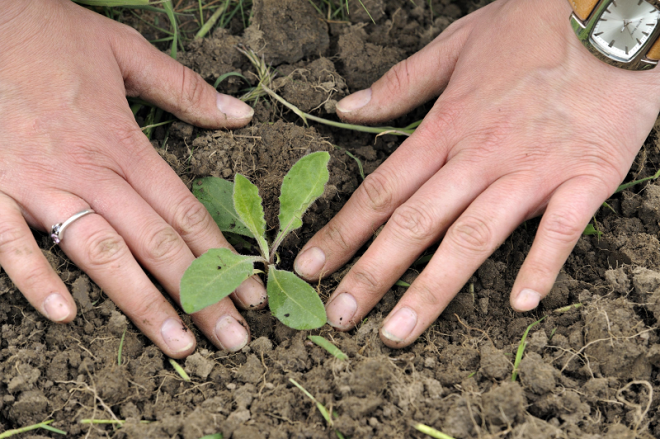Report released for UN Soil Day finds the risk to Scotland’s soil biodiversity has increased

On the UN’s World Soil Day (5 December), NatureScot published Scotland’s Soil Sealing Indicator 2020, a biodiversity report on the soil sealing which exists in Scotland as a result of the built environment. It has found that the overall percentage of soil sealing has risen from 1.55% in 2009 to 1.89% in 2020.
Scotland’s soils hold more than 3,000 megatonnes of carbon, around 60% of which is held in deep peat soils. Healthy, unsealed soils can help reduce flood risk and influence our climate. Soil sealing creates an impervious layer, which damages the natural soil structure and compromises its ability to function. Plants and animals may not be able to access sufficient nutrients, water and shelter in and around sealed area. This also leads to a degradation of the soil health through change to its physical, chemical and biological properties.
The level of soil sealing is typically higher in areas with a long history of settlement or industry, though some of these areas also have important green spaces, which help support nature. Choosing to avoid concrete and look for permeable solutions, such as gravel, can also help.
Although the percentage of land under soil sealing is no more than 2%, much of this is associated with urban areas where flooding is a real concern. Despite the overall increase, the Indicator research did find examples of important nature restoration work in action.
The Scottish Land Commission identifies areas of derelict land across Scotland and, through their task force, several projects are benefitting nature and people. These include the Canal and North Gateway project in Glasgow, which is an exemplar project where blue-green infrastructure underpins regeneration. Its Claypits Local Nature Reserve (LNR) project is transforming a 10ha derelict site into a greenspace with improved access and areas to watch wildlife, and a parallel project provides a surface water drainage solution for the regeneration of key vacant and derelict sites including Sighthill, Hamiltonhill and Cowlairs.
As well, South Lanarkshire Council has restored the former mineral workings of around 1000 hectares from 2018 to 2020, and the East Ayrshire Council-led Coalfield Communities Landscape Partnership (CCLP) is working to enhance the landscape, improve biodiversity and create education and training opportunities on former industrial land.
Simon Foster, NatureScot Trends and Indicators Analyst said: “Scotland’s soils are one of our most underappreciated assets, contributing to the success and health of our economy, environment, heritage and people. Climate change and land use, however, threaten many of our soils’ basic functions.
“As our settlements expand, and development increases to accommodate that growth, we must keep the ground beneath our feet in mind. All life and ecosystems ultimately rely on soils, with water flow and the quality of our lochs and river systems regulated by them, and Scotland’s precious diversity of plants and mammals supported by them.
“The pioneering nature restoration work of these local authority-led infrastructure projects gives reason to hope that the urgent action needed to retain a rich biodiversity for generations is still possible.”
The UN’s World Soil Day campaign focusses on how our soils are being degraded in the face of climate change and human activity.
Read the full document: Scottish Biodiversity Indicator - Soil Sealing.


